This is the 11th installment in our series breaking down the major trades of the 2022 offseason. As opposed to giving out grades, this series explores why the teams were motivated to make the moves they did. Let’s dive into a blockbuster deal between the Cavaliers and Jazz…
On September 3, the Jazz shocked the NBA world by trading Donovan Mitchell to the Cavaliers in exchange for Lauri Markkanen, Collin Sexton (via sign-and-trade), No. 14 overall pick Ochai Agbaji, the Cavaliers’ unprotected first-round picks in 2025, 2027 and 2029, and the right to swap first-round picks with the Cavaliers in both 2026 and 2028.
Part of what made the trade with Cleveland so surprising is that nearly everyone – including Mitchell – expected him to be dealt to New York. I’m not interested in going into that hypothetical much since it didn’t happen, but I do think the Cavs were in a much better position than the Knicks to deal away significant assets.
The Cavaliers’ Perspective:
Over the past 25 years, Cleveland has made the playoffs one time without LeBron James – all the way back in 1998 under former head coach Mike Fratello. With James, the Cavs made nine postseason appearances in 11 seasons, including five trips to the NBA Finals and one championship in 2016 (the Cavs were the underdog in each of those matchups).
In those 11 seasons with James on the roster, the Cavs went 560-342 – a .621 winning percentage, or an average of almost 51 wins over an 82-game season. In the 14 seasons without James during that 25-year span, the Cavs went 420-735 – a .352 winning percentage, or an average of just under 29 wins in an 82-game season.
In the three years after James joined the Lakers in free agency in 2018, the Cavs were the worst team in the NBA, compiling a 60-159 record – a .274 winning percentage, equivalent to just over 22 wins in an 82-game season.
The reason I bring up the Cavaliers’ recent history is because they turned things around in 2021/22, finishing with a 44-38 record. Injuries derailed what had been a great start and they ultimately lost both of their games in the play-in tournament, missing out on the playoffs once again, but the season was still a resounding success.
In many ways, Cleveland’s situation entering the ’22/23 offseason mirrored Minnesota’s – both teams had been very bad without their superstars (Kevin Garnett for the Wolves), but showed a lot of promise last season. Both the Cavs and Wolves are in the midwest, feature talented young cores, and are not free agent destinations. Both were worried about the losing momentum they had gained from last season, so they made blockbuster trades with the Jazz.
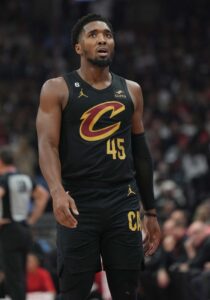 The ability to acquire a 26-year-old three-time All-Star with three years remaining on his contract is extremely difficult to pull off, and the Cavs were able to land Mitchell without including any of Darius Garland, Evan Mobley or Jarrett Allen, the team’s other core players. Mitchell holds a player option in ‘25/26, but he’s highly likely to turn it down considering the salary cap is expected to go up exponentially in 2025 with a new media rights deal.
The ability to acquire a 26-year-old three-time All-Star with three years remaining on his contract is extremely difficult to pull off, and the Cavs were able to land Mitchell without including any of Darius Garland, Evan Mobley or Jarrett Allen, the team’s other core players. Mitchell holds a player option in ‘25/26, but he’s highly likely to turn it down considering the salary cap is expected to go up exponentially in 2025 with a new media rights deal.
Mitchell is not a perfect fit for the roster. At 6’1″, he’s the same height as Garland, leading to defensive concerns, particularly in the playoffs against top teams. Mitchell has been below average on that end the past few seasons, and was particular poor in ‘21/22.
During the ‘21/22 regular season, opponents shot 4% better than their expected field goal percentage with Mitchell as the closest defender, which ranked 245th out of 273 players who played at least 50 games, per NBA.com. During the playoffs, he was a complete disaster defensively, with opponents shooting 9.6% better than expected – a figure that would have ranked dead last in the NBA in seven of the last nine regular seasons.
Obviously, those figures need to improve. Relying on Mobley and Allen to cover up his mistakes is not an answer to that problem, just as it wasn’t with Rudy Gobert. Mitchell needs to hold himself accountable and play with much more effort on that end.
It’s important to note that defensive field goal percentage is only one statistic and Mitchell does some things well defensively, like forcing turnovers. Last season, he ranked 23rd in the league in deflections per game (2.4) and 11th in steals per game (1.5).
He certainly has the physical attributes to be at least an average defender, if not better, like he was his first couple of seasons. Despite his relative lack of height, Mitchell possesses a 6’10” wingspan and a strong 215-pound frame, and he’s a top-tier athlete. He has been a motivated and willing defender through three games with Cleveland; we’ll see if that continues.
Mitchell makes up for defensive concerns with his offensive skill. He is an elite shot creator who was the best offensive player on the league’s top-ranked regular season offense in ‘21/22.
He has been outstanding in his first three games (38.0 MPG) with the Cavs, averaging 33.3 PPG, 5.3 RPG, 7.0 APG and 2.0 SPG on .493/.423/.875 shooting. Those numbers aren’t sustainable, but he’s been highly impressive nonetheless playing without Garland, who is currently dealing with an eye injury.
With an explosive first step and a large package of dribble-drive moves, Mitchell is extremely difficult to contain. Because he’s such a strong two-footed leaper, he only needs a sliver of space to get his jump shot off.
As a three-level scorer, Mitchell can put the ball in the hoop in a variety of ways: he can play with or without the ball, finish at the basket, draw contact, and is a very good shooter. From 2020-22, he averaged 26.1 PPG, 4.3 RPG, 5.3 APG and 1.3 SPG on .444/.368/.849 shooting.
Mitchell is an opportunist — if he sees an opening, he exploits it without hesitation. He’s nearly unstoppable if he gets a half step on his opponent due to his excellent body control and ability to change direction and speed on the fly, particularly favoring Euro-steps near the basket.
As Mitchell grew as a player, so to did Utah’s offensive rating, climbing each of his five seasons: from 16th to 14th to ninth to fourth to first. That is not a coincidence.
It’s true that the Jazz built their offensive system around Mitchell, surrounding him with strong screen-setters and shooters who could space the floor and move the ball intelligently. It’s reasonable to say Mitchell benefited from that, particularly the complementary play-makers.
It’s also reasonable to say that he’s a good enough offensive player to build your entire system around and be the top offense in the league during the regular season.
Unlike Gobert, whom I previously characterized as a floor-raiser due to his elite interior defense and rebounding, Mitchell is a ceiling-raiser due to his elite shot creation ability and high-level scoring. The Cavs are certainly hoping he can help take them to the next level.
Read more
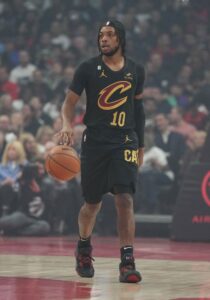 Mitchell has never played with a team as talented as the current Cavs roster. Garland, Mobley and Allen are all under 25 years old, and should continue to improve over time. Both Garland and Allen had enormous developmental leaps in ‘21/22 when they were named first-time All-Stars, and Mobley, the Rookie of the Year runner-up, might have the highest ceiling of all four players, though Mitchell is certainly the best – and most accomplished – of the group right now.
Mitchell has never played with a team as talented as the current Cavs roster. Garland, Mobley and Allen are all under 25 years old, and should continue to improve over time. Both Garland and Allen had enormous developmental leaps in ‘21/22 when they were named first-time All-Stars, and Mobley, the Rookie of the Year runner-up, might have the highest ceiling of all four players, though Mitchell is certainly the best – and most accomplished – of the group right now.
The Cavs were one of the more entertaining teams to watch last season due to their cohesion, defense and unselfish ball movement. They played like a true team – one that genuinely enjoyed sharing the court with one another and found joy in the success of teammates.
However, one of the things Cleveland lacked last season was a jolt of athleticism and shot creation to alleviate pressure off Garland, who faced frequent double teams after season-ending knee injuries to Sexton and Ricky Rubio. Mitchell provides that and much more. His addition means the team’s offense will likely approach the top 10 in ’22/23 after ranking a mediocre 20th last season.
For all of Mitchell’s strengths on offense, he makes some questionable decisions, posting a 1.79-to-1 assist-to-turnover ratio last season, a below average mark for any guard, let alone high-usage ball-handler (his career mark is only 1.76-to-1). Some of his turnovers are due to him being a very right hand dominant dribbler, which is partly why he’s never been a full-time point guard (on Sunday, the Wizards nearly stole the game away from Mitchell – quite literally – on consecutive possession to force overtime).
He has improved as a passer over the years, but his placement is off at times, and he’ll occasionally force passes and bad shots when pressured. That was particularly the case at the end of games last season, when the Jazz had multiple fourth quarter collapses.
To illustrate the latter point, Mitchell attempted the second-most shots in the league in clutch situations last season (score within five points in the last five minutes of the fourth quarter), but among the 44 players who attempted at least 40 such shots, Mitchell ranked 40th in field goal percentage at 32.9%, posting an overall shooting slash line of .329/.172/.667, per NBA.com. For context, his regular season slash line was .448/.355/.853.
For those who say he had no help, his former teammate, Mike Conley, was No. 8 in field goal percentage in the clutch, posting a shooting line of .469/.462/.786. In the playoffs, among the 32 players who attempted at least five shots in the same situations, Mitchell ranked No. 27 in field goal percentage at 27.3%.
That’s not to say that Mitchell isn’t clutch, because small sample sizes typically lead to a lot of variation in results (for instance, Devin Booker was last in high-volume clutch FG% in ‘20/21 but first in ‘21/22). He just had a down season in that regard, and he has had some epic playoff performances in the past.
The Cavs were able to keep their three best players out of the trade, but they dealt away nearly everything else they had to offer: A couple of starting-caliber former lottery picks (Markkanen and Sexton), a lottery pick in this year’s draft (Agbaji), unprotected first-rounders in 2025, 2027, and 2029, and first-round pick swaps in 2026 and 2028.
Accelerating a rebuild in the manner Cleveland did is interesting because while the team certainly gave up a lot, you can’t really classify it as an “all-in” move, since they were able to keep the young trio out of the deal. Cleveland had an excellent net rating when Garland, Allen and Mobley were on the court last season, and adding Mitchell should only enhance that.
Barring major injuries, the Cavaliers should at minimum be in the playoff mix for the next three years, with their top four players under contract through at least ‘24/25. I don’t necessarily think they’re a top-six lock in ‘22/23, even after landing Mitchell, because the East looks really strong, but I do think they’ll end up making it in (if I had to make a prediction, I’d probably put them fifth or sixth).
Where the Cavaliers finish in the standings will largely depend on chemistry and internal development, but they’ve got the high-end talent to be a very good for a long time – this trade was just as much about the future as the present. There are some injury concerns, as Garland, Mobley, Allen, Caris LeVert, Dean Wade, and Isaac Okoro all missed several games last season, Rubio is still recovering from a torn ACL, and Kevin Love has a lengthy injury history.
The draft capital Cleveland traded to Utah is so far into the future that it’s kind of pointless to speculate about its present value because so many things can change in the meantime, but the 2025 pick seems pretty likely to be in the late teens or 20s right now. Still, if Mitchell leaves in free agency that summer, the picks in ’27 and ’29 could be enticing, and trading away unprotected picks always carries a lot of risk (the swaps in ’26 and ’28 will only matter if the Cavs are worse than the Jazz in those years, which certainly isn’t a given).
Part of that risk isn’t necessarily where a pick might land in the future, but the opportunity cost. As an example, the Cavaliers acquired Allen by trading away a Bucks first-rounder they controlled from a prior deal, but trading for Mitchell – and previously acquiring LeVert – has left the first-round cupboard bare (Cleveland can’t trade its 2024 first due to the Stepien rule).
While it’s true that the Cavs could theoretically trade Mitchell in a year or two if things don’t work out, they wouldn’t receive the same amount of assets that they gave up in that scenario because Mitchell would be that much closer to free agency. The team acquiring him would basically have to have a handshake agreement that he’d re-sign in order to offer a similar type of haul.
Mitchell is an undeniably great player and the Cavs pounced on the opportunity to land him, creating one of the most exciting young cores in the league, with all four players under contract long term. Dealing away substantial assets like they did is simply what it takes to land a player of Mitchell’s caliber – time will tell if it pays off, but he’s certainly off to a great start.
The Jazz’s perspective:
Utah was unable to advance past the second round of the playoffs with Mitchell and Gobert as the team’s two best players despite having a lot of regular season success – the Jazz were tied with Denver for the most wins in the West over the past four years. The ship had run its course, and everyone knew it.
In the NBA, sometimes you have to take a step back to have a chance at a brighter future, even if it’s a tough pill to swallow in the short term. With an aging, expensive roster and a lack of future picks, Utah’s only real option was to retool the roster, and that’s what the front office has done.
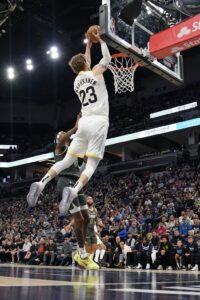 The Jazz have gotten off to a surprising 3-0 start in ‘22/23, with victories over three playoff teams from last season. They’ve been entertaining to watch, and they have several quality NBA players, so it will be interesting to see whether president Danny Ainge and GM Justin Zanik deal away more veterans to slide down the standings or just roll with what they’ve got.
The Jazz have gotten off to a surprising 3-0 start in ‘22/23, with victories over three playoff teams from last season. They’ve been entertaining to watch, and they have several quality NBA players, so it will be interesting to see whether president Danny Ainge and GM Justin Zanik deal away more veterans to slide down the standings or just roll with what they’ve got.
The Cavs certainly gave up a haul of assets to acquire Mitchell. The framework of this deal is quite similar Minnesota’s trade to acquire Gobert, with Utah prioritizing unprotected picks and young players, but I definitely think the veterans in the Mitchell package have more long-term upside.
Markkanen has been the Jazz’s best player thus far, even after a down game on Monday. He’s averaging 21.5 PPG, 8.8 RPG, 3.0 APG and 1.0 SPG – all career-highs – through four games (35.5 MPG). If he keeps playing at anything close to this level, his contract — which will pay him $51.7MM ($39.7MM guaranteed) over the next three years — will be an absolute bargain.
Markkanen wasn’t a perfect fit for Cleveland as a jumbo-sized small forward, but in some ways it made sense. Despite being 7’0”, he plays more like a wing than a traditional big man.
Utah has been playing him at the three as well, starting in the frontcourt alongside Jarred Vanderbilt and Kelly Olynyk. Having extra size complementing the team’s small backcourt and surrounding a non-shooter like Vanderbilt with bigs who can space the floor makes sense.
Markkanen was shoehorned into a spot-up role due to the lack of shooting on the Cavs’ roster last season, and his offensive game is more varied than he displayed in ‘21/22, but he still wound up averaging a solid 14.8 PPG and 5.7 RPG on .445/.358/.868 shooting (.582 true) in 61 games (30.8 MPG).
The thing that impressed me most about Markkanen last season didn’t have anything to do with his offensive production though – everyone knows he can score, even if he’s erratic at times. The 25-year-old was a poor defender in four seasons with Chicago, yet with Cleveland, he played with great effort on that end. Even though he was still only around league average, there’s a huge difference between close to average and a liability, and Markkanen showed that he can be better than the reputation that preceded him.
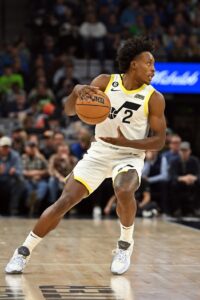 Restricted free agent Sexton finally landed the big payday he’d been looking for, receiving a four-year, $71MM deal via sign-and-trade. He was a very good scorer for the Cavs in ‘20/21, averaging 24.3 PPG, 3.1 RPG, 4.4 APG and 1.0 SPG on .475/.371/.815 shooting (.573 true shooting percentage).
Restricted free agent Sexton finally landed the big payday he’d been looking for, receiving a four-year, $71MM deal via sign-and-trade. He was a very good scorer for the Cavs in ‘20/21, averaging 24.3 PPG, 3.1 RPG, 4.4 APG and 1.0 SPG on .475/.371/.815 shooting (.573 true shooting percentage).
Sexton was limited to just 11 games last season after suffering a torn meniscus, which required surgery. Zanik said they were intrigued by the chance to land the 23-year-old guard, who’s had a slow start this season through three games (19.7 MPG) off the bench, averaging 13 PPG, 4.3 RPG and 2.3 APG on .357/.286/.850 shooting.
For as talented of a scorer as Sexton is, he produced big numbers on terrible teams that were better with him off the court than on it in each of his first four seasons. He also doesn’t provide much value in other areas – he’s a below average rebounder, passer and decision-maker, and needs to improve defensively.
Even if his game is flawed, I still like Sexton’s never-back-down mentality, and he’s reportedly a very hard worker and good teammate. His contract seems reasonable, even if he doesn’t round out the rest of his game, due to his high-level scoring ability.
Rookie wing Agbaji was a four-year starter at Kansas, earning numerous accolades as a senior after leading the Jayhawks to the championship, including first-team All American, Big 12 Player of the Year, and NCAA Tournament Most Outstanding Player. It’s unclear how much playing time he’ll receive for the Jazz, but if they continue to deal away veterans, he could have a larger role for Utah than he would’ve for Cleveland.
Still, the main appeal for Utah was the unprotected first-rounders in 2025, 2027 and 2029, plus the ability to swap first-round picks with Cleveland in 2026 and 2028.
The Jazz are betting that Mitchell declines his player option in ‘25/26 and joins another team in free agency, which would obviously weaken the Cavs’ roster and make the picks and swaps from 2026-29 more valuable. Mitchell theoretically leaving Cleveland could also have a domino effect on other players asking out, because it might signal things aren’t going as well as expected.
As Zanik explained after the trade, the value in stockpiling first-rounders isn’t necessarily where the picks might land — it’s that controlling them gives you more options. The Jazz now have have an arsenal of selections at their disposal to potentially package in trades for players they like in order to accelerate their rebuild instead of waiting several years for the picks to change hands.
In addition to their own first-round pick in the 2023 draft, Utah also controls Minnesota’s unprotected first-rounder and a third first-round selection via the Royce O’Neale trade (the lesser of the Sixers’, Rockets’ or Nets’). Despite the hot start, there’s still a good chance the Jazz finish as a lottery team in ‘22/23, especially if they keep trading away veterans.
For the sake of argument, let’s say that one of Anthony Edwards, Karl-Anthony Towns or Rudy Gobert gets injured during the season and the Timberwolves miss the playoffs. I hope that doesn’t happen because I don’t want to see anyone get injured — I’m just playing devil’s advocate. That scenario would give Utah two 2023 lottery picks. The Jazz could fairly easily trade for a third if they really wanted to, given all of the future picks they control.
I’m not saying I think that chain of events will happen – it’s possible, sure, but improbable. That isn’t the point. The point is, had the Jazz kept Gobert and Mitchell and remained a middle-of-the-pack playoff team, they’d be picking in the 20s in 2023, they’d be over the salary cap, and would only control their own future picks with a limited ability to improve. Now they have an incredible amount of flexibility to reshape the roster in whichever way they deem best.
The Jazz also cleared a ton of short- and long-term salaries off the books with their five major trades this offseason. As of right now, Utah projects to have at least $20MM in cap room next summer, and could have over $80MM in cap room in 2024. In addition to going after free agents, having that much financial flexibility also allows a team to accumulate more draft picks and young players via salary dumps.
The Jazz’s roster reconstruction culminates a competitive, yet ultimately disappointing stretch of basketball for the Gobert-Mitchell era. There’s no doubt in my mind that the team is now better positioned for the future than it was after another first-round playoff exit in 2022.
 The ability to acquire a 26-year-old three-time All-Star with three years remaining on his contract is extremely difficult to pull off, and the Cavs were able to land Mitchell without including any of Darius Garland, Evan Mobley or Jarrett Allen, the team’s other core players. Mitchell holds a player option in ‘25/26, but he’s highly likely to turn it down considering the salary cap is expected to go up exponentially in 2025 with a new media rights deal.
The ability to acquire a 26-year-old three-time All-Star with three years remaining on his contract is extremely difficult to pull off, and the Cavs were able to land Mitchell without including any of Darius Garland, Evan Mobley or Jarrett Allen, the team’s other core players. Mitchell holds a player option in ‘25/26, but he’s highly likely to turn it down considering the salary cap is expected to go up exponentially in 2025 with a new media rights deal. Mitchell has never played with a team as talented as the current Cavs roster. Garland, Mobley and Allen are all under 25 years old, and should continue to improve over time. Both Garland and Allen had enormous developmental leaps in ‘21/22 when they were named first-time All-Stars, and Mobley, the Rookie of the Year runner-up, might have the highest ceiling of all four players, though Mitchell is certainly the best – and most accomplished – of the group right now.
Mitchell has never played with a team as talented as the current Cavs roster. Garland, Mobley and Allen are all under 25 years old, and should continue to improve over time. Both Garland and Allen had enormous developmental leaps in ‘21/22 when they were named first-time All-Stars, and Mobley, the Rookie of the Year runner-up, might have the highest ceiling of all four players, though Mitchell is certainly the best – and most accomplished – of the group right now. The Jazz have gotten off to a surprising 3-0 start in ‘22/23, with victories over three playoff teams from last season. They’ve been entertaining to watch, and they have several quality NBA players, so it will be interesting to see whether president Danny Ainge and GM Justin Zanik deal away more veterans to slide down the standings or just roll with what they’ve got.
The Jazz have gotten off to a surprising 3-0 start in ‘22/23, with victories over three playoff teams from last season. They’ve been entertaining to watch, and they have several quality NBA players, so it will be interesting to see whether president Danny Ainge and GM Justin Zanik deal away more veterans to slide down the standings or just roll with what they’ve got. Restricted free agent Sexton finally landed the big payday he’d been looking for, receiving a four-year, $71MM deal via sign-and-trade. He was a very good scorer for the Cavs in ‘20/21, averaging 24.3 PPG, 3.1 RPG, 4.4 APG and 1.0 SPG on .475/.371/.815 shooting (.573 true shooting percentage).
Restricted free agent Sexton finally landed the big payday he’d been looking for, receiving a four-year, $71MM deal via sign-and-trade. He was a very good scorer for the Cavs in ‘20/21, averaging 24.3 PPG, 3.1 RPG, 4.4 APG and 1.0 SPG on .475/.371/.815 shooting (.573 true shooting percentage).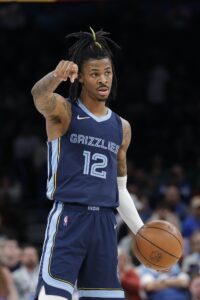
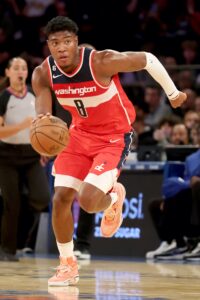
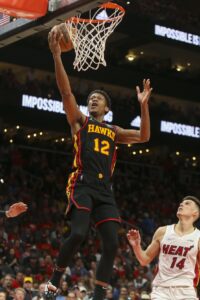
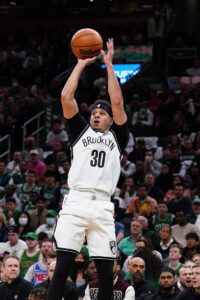 Let’s use the Nets as an example.
Let’s use the Nets as an example. 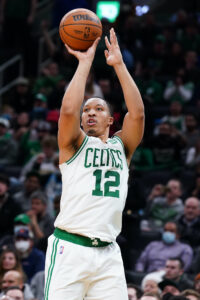 In 2020/21, Williams’ second season, he made progress as a shooter, a very important aspect of his role for Boston. His averages – 4.7 PPG and 2.8 RPG on .437/.372/.588 shooting (.546 true) in 63 games (18.1 MPG) – were still fairly modest, but the 12.2% increase in three-point percentage was encouraging.
In 2020/21, Williams’ second season, he made progress as a shooter, a very important aspect of his role for Boston. His averages – 4.7 PPG and 2.8 RPG on .437/.372/.588 shooting (.546 true) in 63 games (18.1 MPG) – were still fairly modest, but the 12.2% increase in three-point percentage was encouraging.